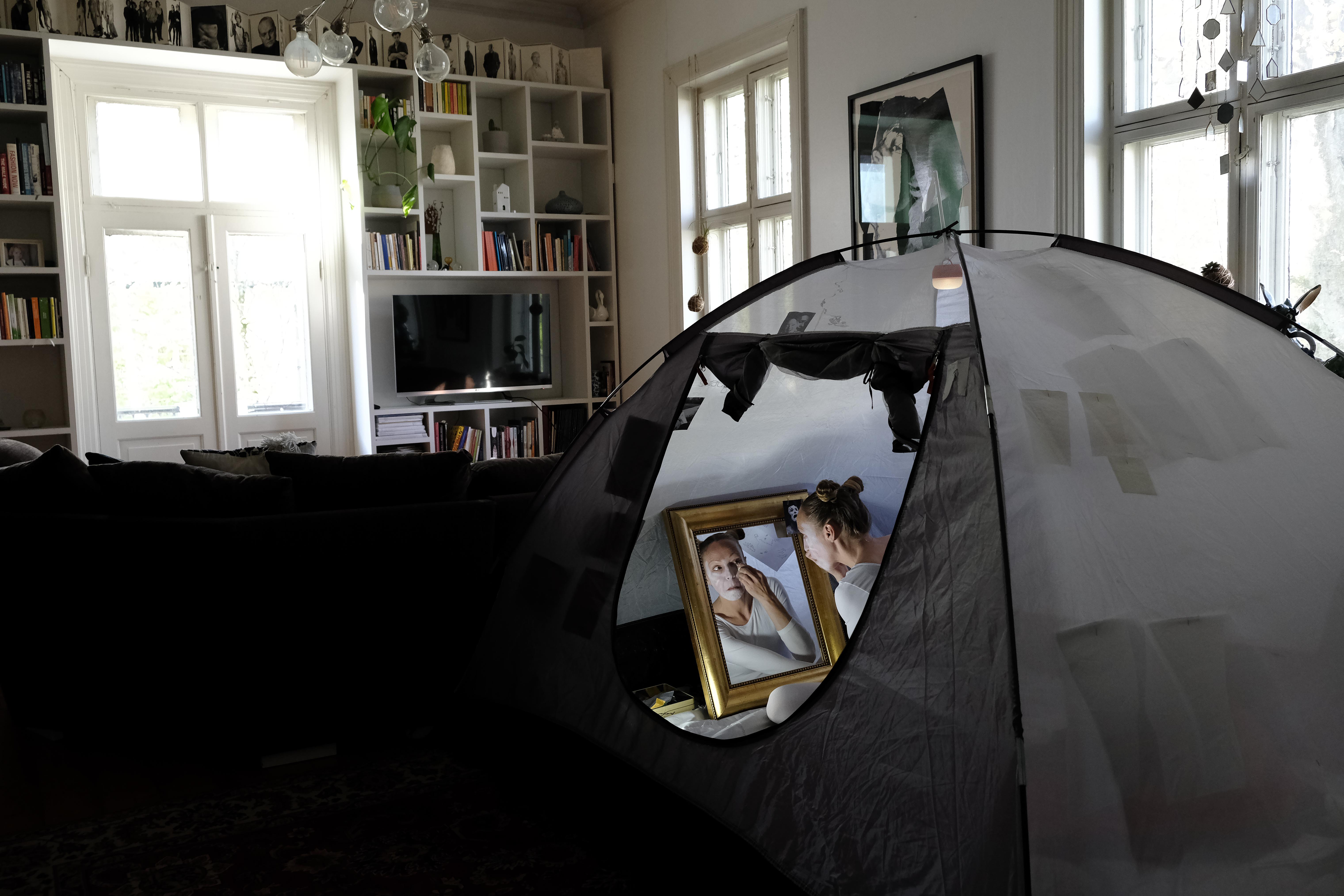Sharing Tent
If Sorrow was a place or a
room / Where would it be / What would it look like /
How would it feel to be inside it / Which qualities would it have /
What experiences would hide there / Would someone inhabit that space?
How would it feel to be inside it / Which qualities would it have /
What experiences would hide there / Would someone inhabit that space?












2020.
Inner tent of four persons tent, 135 x 230 x 210cm.
Embroidery, photoprint on clothes, wool socks and stones. Video, color, sound, 8min. 35sec.
Video credit: Stian Tjernsmo.
Embroidery, photoprint on clothes, wool socks and stones. Video, color, sound, 8min. 35sec.
Video credit: Stian Tjernsmo.
Sharing Tent started as a reaction to the loss of my father. I couldn’t find the place for this overwhelming emotion in myself, and needed a place to put my body and give myself time to mourn. A solution became putting up a tent in my living room. As a manifestation of the room for sorrow in myself. I slept inside the tent, and carried it around with me. The experience of sorrow was nothing like what the world had told me to expect. I experienced it as being filled with questions, good questions, about what the experience of life is. Sorrow is a large spectrum, but more than anything I experience this new room in me as a state of curiosity. Sharing Tent is a project exploring mourning.
Embroidery takes time, and became a bridge into the tent, daring to spend time there, sitting still, digesting the loss. I transferred images of my father and certain whitepainted characters, on to his clothes and sewed them into the tent. The topics these archetypes and characters represent, are also those me and my father typically talked about, a lifelong conversation, which continued in the tent.
Shintoists (biggest branch of Buddhism) believe we are to continue a conversation with our dead ancestors. For this we need a shrine. This can be anything, a building, a mountain, a stone in your pocket, or a tent.
I got curious about how other women who had lost their fathers experienced mourning. I invited strangers and friends to share my tent. The women decided in which way they wanted to communicate and share - without words. In this way, Sharing Tent has developed to be a collaborative project, and a very dear one. Our sharing rituals begin by painting each other white. Butoh dancers do this to neutralize or empty themselves from what they know, to make space for something new to come in through the present moment as it is.
The void of death is
invisible and nevertheless takes up space within us. It is the very absence of
the person that becomes so present. Cutting out the silhouettes of our fathers
became a symbol of them being absently present. The edge of the silhouette
confirms that they have been here physically, and the invisible void that they
are no longer. It was from this edge between invisible and present, that some
of these good questions arose in me. In the void of the silhouette there is no physical
information, but invisible content in the shape of an affirmation and
confrontation of life and death. Our collective experience with absence.
With:
Kyuja Bae, artist and dancer, MA in Choreography from Oslo National Academy of the Arts, and I met for the first time in silence outside the tent where we shared experiences through movements.
PhD Research fellow Helena Schmidt and I grew up together. We shared our experiences through making songs together in the tent.
Tanja Schûtt Dideriksen, psychological nurse, is a close friend. We made embroidery and wrote difficult words onto white fabric and washed them in the river.